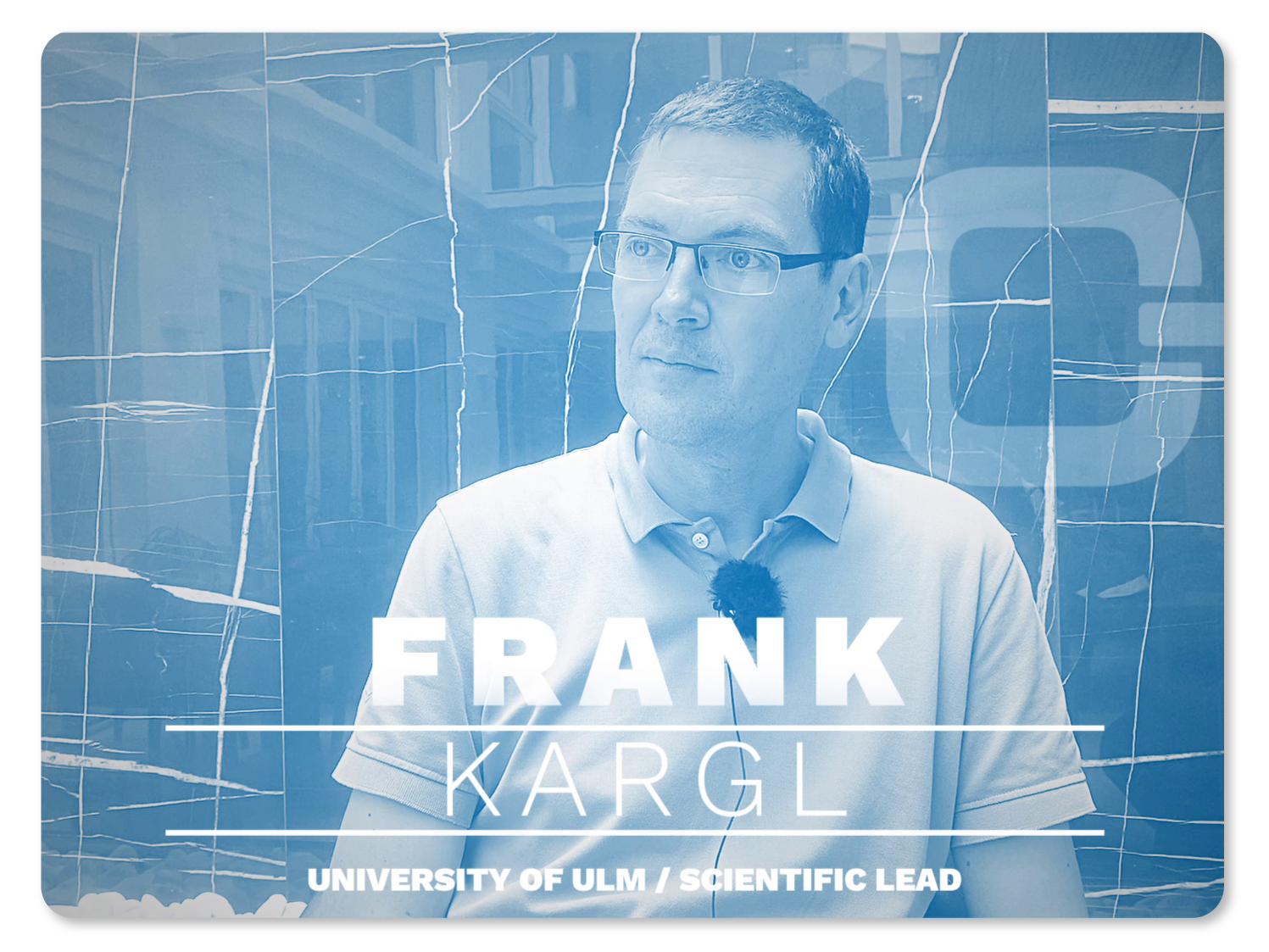In our second talk, Prof. Frank Kargl, Scientific Lead of the CONNECT project and Director of the Institute of Distributed Systems at Ulm University provides his perspective on the significance of the CONNECT project and the role of trustworthiness in connected cars. He discusses the challenge of translating this into technical terms and the outlook within the project, as well as the relevance of it for younger generations.
Please start with stating your name and institution and providing a brief overview of your background.
My name is Frank Kargl, I am a Professor in Computer Science at Ulm University, and I started to investigate security and privacy of automotive systems around 2005.
And now, so many years later, we look back at a whole series of research activities, literally hundreds of research publications where we investigated cars, the privacy then moved on towards automated driving. And now finally we come to CCAM, corporative mobility systems.
From my perspective, CONNECT is taking the next step in how can we implement and operate these highly complex systems that we envision can solve a lot of the mobility problems of the future? How can we enable them in a secure and trustworthy way so that we don’t introduce problems that can be avoided if you carefully think about the security and the design from the start up.
CONNECT is going to take the logical next step in investigating security principles for these types of highly complicated, highly complex cyber physical systems. Now what is new with CONNECT is that we’re putting the concept of trust centre stage.
The idea is that we all want these systems to be trustworthy. But from a technical perspective, just saying something is trustworthy, it’s nothing you can measure. It’s nothing you can quantify. So what we want to have is we want to have a technical notion of trust that can be calculated, so that we can give guarantees that certain minimum trust requirements are actually kept. And this requires modeling of trust. This requires evaluation of trust. We need to reason about the fundamental course of our ICT. Our information, communication technology, the software systems, the hardware. And this is what CONNECT Is about.
In the end we want to answer one simple question: Are these new automated cooperative vehicles, are they trustworthy enough that we as passengers can simply sit in there comfortably and don’t have to worry about some hackers or attackers infiltrating these systems?
What is your role in the CONNECT project?
My role in the project is twofold. On the one hand, I am a partner in the project, and we lead work package 3. And by that we basically will also lead the work towards this trust models that I’ve been speaking of.
On the other hand, I am the scientific lead in the project, which basically means that, I will have to look a little bit for quality assurance, but I mostly see my role in as an enabler to basically motivate the different teams, the different organizations to different persons in the project, to interact, to exchange information, to think about joint research opportunities and then help them and enable them to basically put these ideas and their research facades into good publications, good dissemination, good outcomes.
What really excites you about CONNECT? Where do you see the innovation?
What I’m really excited about in this project is that if we succeed in building these explicit notions of trust and modelling this and engineering these trust reasoning capabilities into the systems, i think we will open the door towards a completely new type of IT Systems that will be fundamentally more resilient to security attacks than our today systems.
And if we have learned something from the past and that this is really urgently needed because the types of systems we have today are often not trustworthy to that limit that we need it. Well, trust, as I said, is a very all encomprising attribute. There are so many areas of an IT system where we can look into how to model that trust, how to evaluate the trust, how to also reason about trust that the project can actually become very broad. By its very nature, we need to refine the research questions and identify what we need to focus on and where we can have the most impact.
What upcoming challenges do you foresee?
One of the challenges to really stay focused and not just all go into different directions. And that’s, again, what me as a scientific lead will probably also try to support the coherence of the project.
If you would have to explain how exciting the CONNECT project is to the younger generation – what would you say is really cool about it?
Today’s young generation, basically, they grew up with information and communication technology, now with the smartphones and the Internet. It is kind of natural to them. But at the same time, they all experienced that the system as we have them today, they are also vulnerable when it comes to their security. We have problems with malware fraud on the Internet, different things, privacy problems.
I think they understand that if we rely to an ever larger extent on this information and communication technologies, there needs to be something done to make them more trustworthy. And this is exactly what CONNECT is all about.
As I said earlier, when you step into an automated vehicle that drives you over a highway at maybe 120 kilometres per hour, you want to be really sure that you can trust that vehicle. And we want to basically enable that, that you can rely on this.
